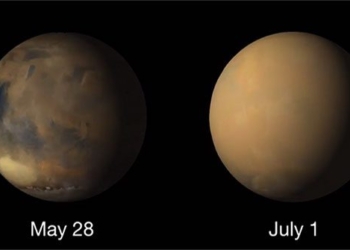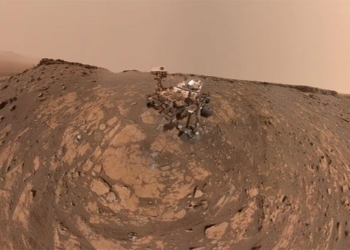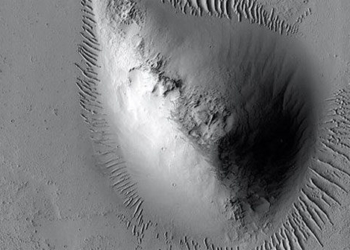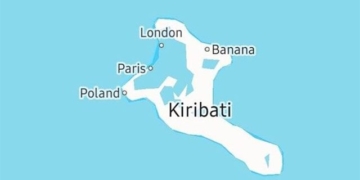However, unlike WALL-E, the “loneliest robot in the universe,” Oppy never found an EVE in its life.
On February 13, 2019, NASA (the National Aeronautics and Space Administration) decided to switch off Opportunity, a rover that had existed for fifteen years on Mars after engineers at the Jet Propulsion Laboratory sent over a thousand signals to revive it following a severe dust storm.
When a project comes to an end, the first thought of many might be that it was unsuccessful or a failure. But for the little six-wheeled robot with a bright name – Opportunity, which means “chance,” affectionately nicknamed Oppy by NASA engineers, the situation was different. Its demise was celebrated as if the mission had been a success.
A 15-Year Journey Wandering Alone in Space
Opportunity landed at Meridiani Planum, a plain located south of the Martian equator on January 25, 2004. It followed its twin robot, Spirit, which had arrived on the opposite side of the planet just three weeks earlier. The two rovers were designed to undertake a 90-day adventure on Mars (about 92 days on Earth) and travel no more than one kilometer. The first rover, Spirit, successfully operated for over five years, logging a driving distance of 7.73 kilometers until it became stuck in soft soil at an angle that prevented the robot from recharging its solar panels.
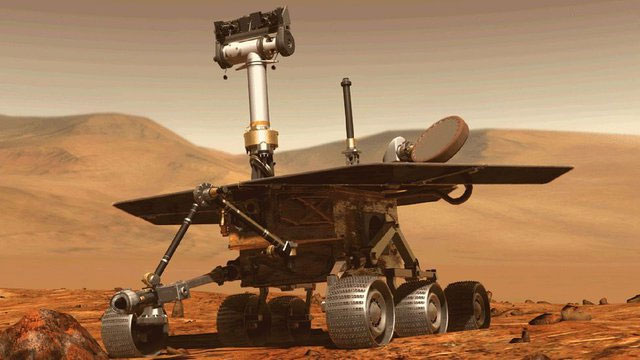
Opportunity was meant to operate for just 3 months, but persevered for 15 years until the end.
Meanwhile, its twin Spirit embarked on an even more remarkable journey beyond everyone’s expectations when the mission began. Oppy continued to explore the surface of the Red Planet for 15 Earth years. It traversed a distance of over 45 kilometers, setting a record for our off-planet wheeled spacecraft.
Oppy arrived at a time when there was evidence suggesting that Mars was once wet and warmer than it is today. It returned over 217,000 images of the Martian surface and even took selfies. Oppy visited several locations on Mars’s surface, starting from Eagle Crater in 2004 and then moving to a heat shield that had fallen near Endurance Crater. It survived Purgatory Dune, where it got stuck in a sand ripple for a month, and spent two years collecting data around the edges of Victoria Crater.
One of the most notable discoveries of the “loneliest robot in the universe” occurred at Endeavour Crater when Oppy found several mines and minerals. These rocks allowed scientists to hypothesize that liquid water had existed on Mars billions of years ago and could potentially be drinkable with a neutral pH. Oppy achieved all this by continuously recharging its solar power, going into a hibernation state whenever dust storms raged, and waking up again when the weather was clear.
It continued to travel south for many years, surviving numerous dust storms while moving across the Martian surface.
Throughout those 15 long years, Oppy was all alone. And as a reminder that there were still many people on Earth watching over it day and night, NASA engineers programmed a special feature for Oppy to play music. These songs were meant to “wake” Oppy up to work each day and let it know that it was not entirely alone.
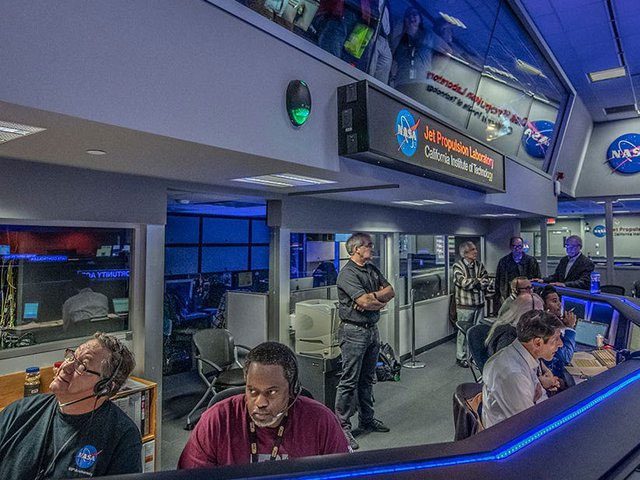
The mission control team at NASA’s Jet Propulsion Laboratory sent their final commands to the “robot geologist” Oppy on February 12, 2019
Ultimately, in July 2017, Oppy reached Perseverance Valley, which unbeknownst to anyone, would become its final resting place. A year later, it faced a monumental battle with a massive planet-wide dust storm that enveloped Mars. Unfortunately, the storm plunged the planet into darkness, dust, and wind, rendering the little robot unable to survive any longer.
Oppy’s last message sent back to Earth was: “My battery is low and it’s getting dark.” At the farewell to Oppy, Billie Holiday’s song “I’ll Be Seeing You” was played.
Due to Oppy’s remarkable story, the media dubbed it the “loneliest robot in the universe”, reminiscent of WALL-E from the famous Disney film. However, unlike WALL-E, Oppy never found an EVE in its life. It kept wandering alone in the vastness of the Red Planet, diligently carrying out its assigned mission.
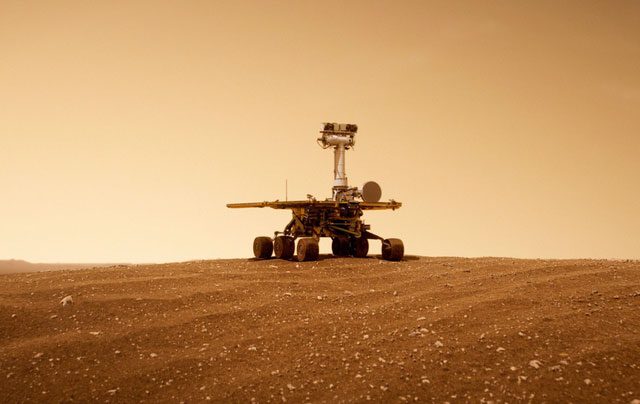
Oppy has been dubbed the “loneliest robot in the universe” by the media
An Inspiring Story from the “Loneliest Robot in the Universe”
The sacrifice of the solitary rover has opened up many new opportunities for space science and humanity’s quest to explore the vastness of space. It has left behind a legacy. First and foremost, Oppy has inspired thousands of people around the world. Witnessing the story of this famous rover, thousands of young students are determined to pursue careers in space science. The explorer has proven that we can build capable spacecraft and has given hope that humanity can embark on even more ambitious projects than Oppy.
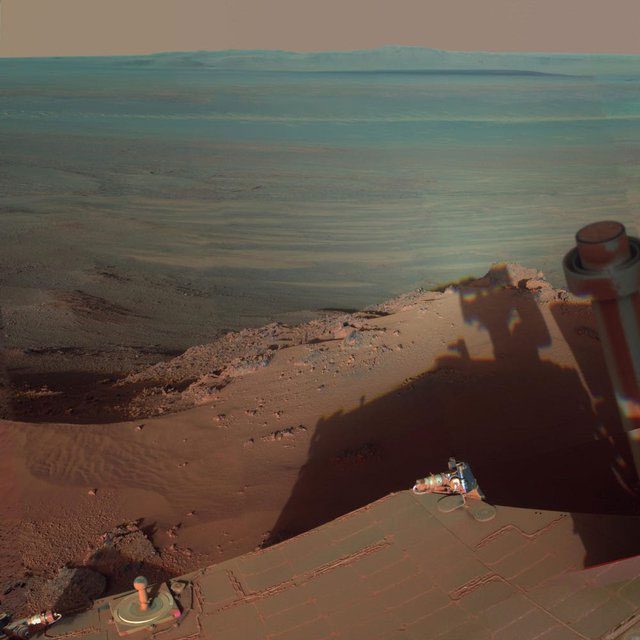
Oppy captured Endeavour Crater on Mars, March 9, 2012

Simulated images show what NASA’s Oppy rover saw when a global dust storm on Mars obscured the Sun in 2018, when it lost contact with Earth
The monstrous dust storm ended Oppy’s adventure but did not end numerous opportunities for exploring Mars. The car-sized Curiosity rover has been exploring Gale Crater since 2012, investigating the planet’s climate, the possibility of microbial life on Mars, and its habitability.
NASA’s InSight lander arrived at Mars on November 26, 2018, and began investigating the Red Planet. Unlike Opportunity and Curiosity, it will not wander the surface but will explore the planet’s interior by measuring seismic activity and internal heat flow. Finally, NASA launched two more rovers in July 2020 – Mars 2020 and Rosalind Franklin. Both are designed to search for signs of life on Mars.
The Opportunity rover was officially declared dead on February 13, 2019. However, the end of Oppy marks the beginning of hope for humanity that one day brave astronauts will surpass our expectations – just like the little rover did – and will leave footprints on the surface of Mars, heralding the start of an unbounded exploration.








































